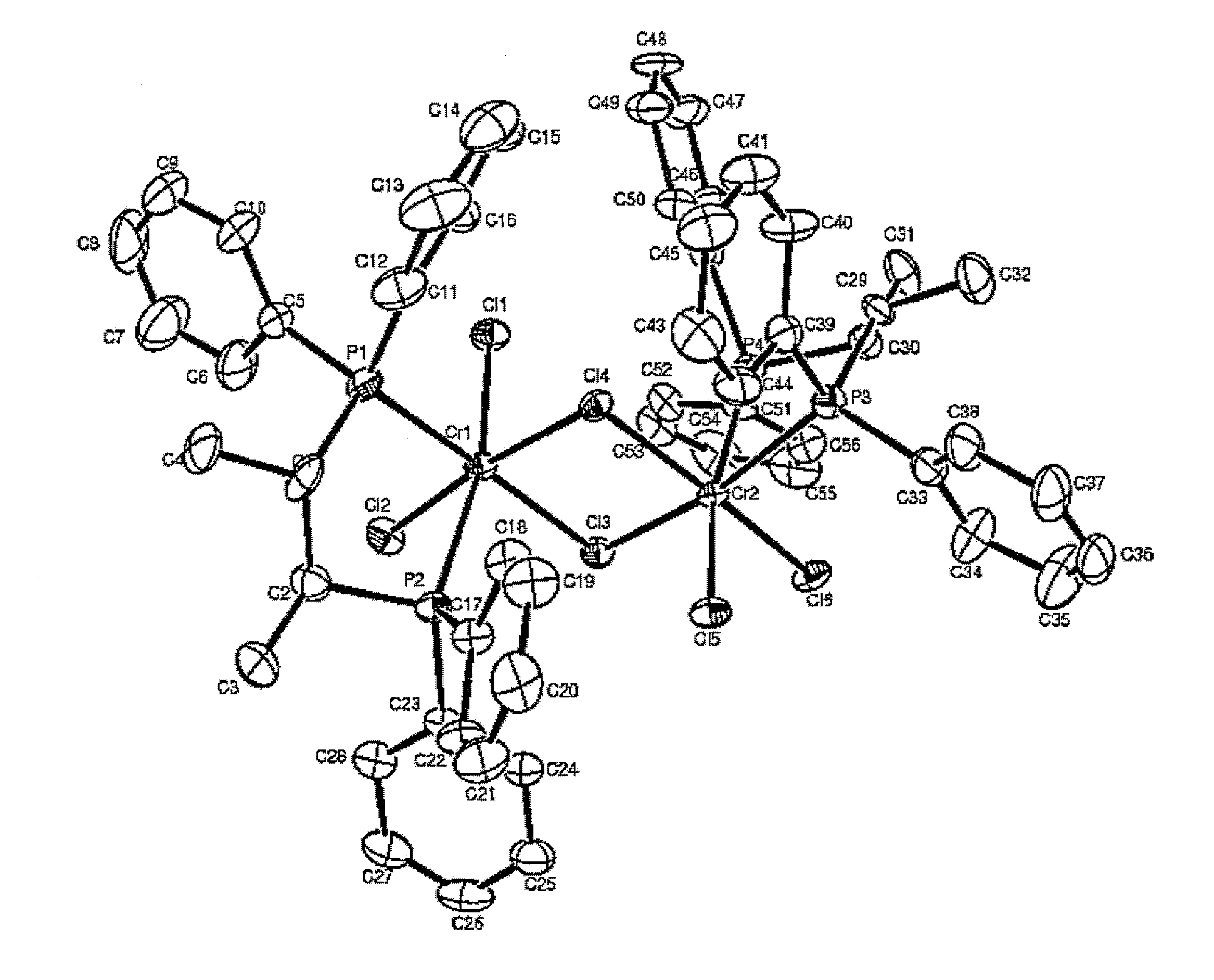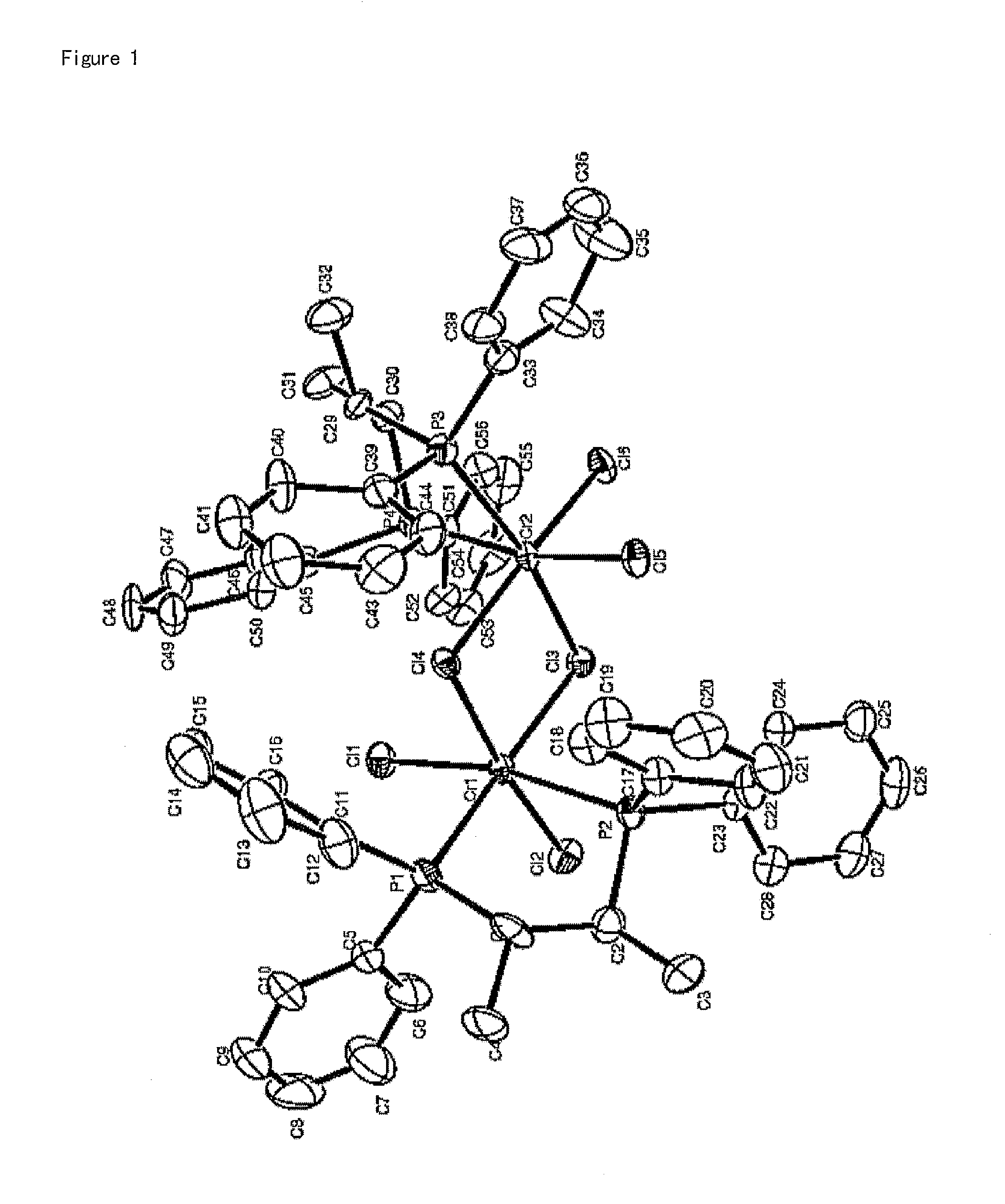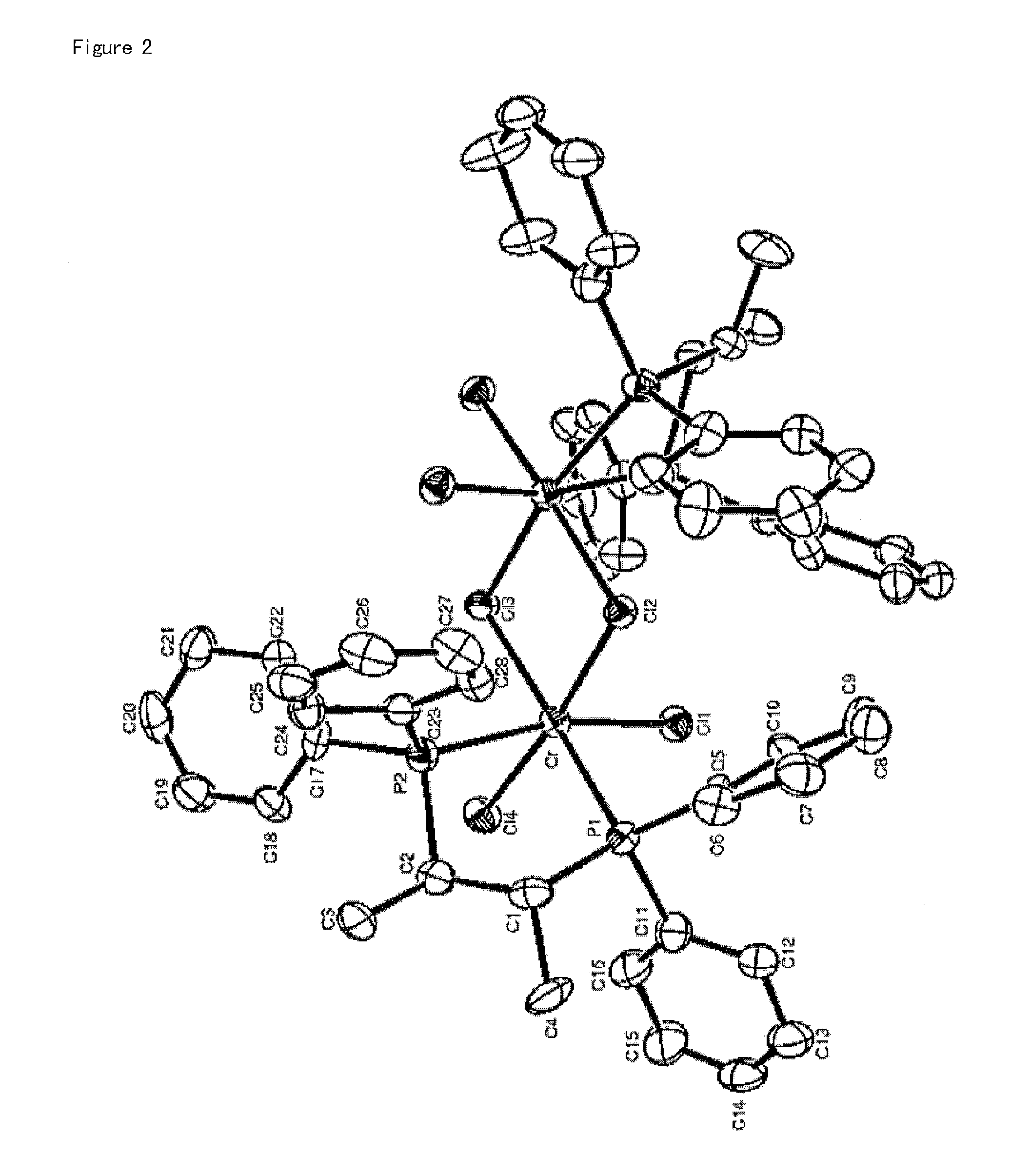Highly Active and Selective Ethylene Oligomerization Catalyst and Method of Preparing Hexene or Octene Using the Same
- Summary
- Abstract
- Description
- Claims
- Application Information
AI Technical Summary
Benefits of technology
Problems solved by technology
Method used
Image
Examples
preparation example 1
Catalyst Preparation Example 1
Preparation of (S,S)-(phenyl)2PCH(methyl)CH(methyl)P(phenyl)2 chromium trichloride tetrahydrofuran [CrCl3(THF){(P,P)-k2-(S,S)—((Ph)2P(Me)CH—CH(Me)P(Ph)2)}]
A. Preparation of Ligand (S,S)-(Phenyl)2PCH(methyl)CH(methyl)P(phenyl)2[(S,S)-Ph2PCH(Me)CH(Me)PPh2]
[0107]A chiral ligand [(S,S)-Ph2PCH(Me)CH(Me)PPh2] was prepared as disclosed in B. Bosnich et al, J. Am. Chem. Soc. 99(19) (1977) 6262. (2R,3R)-butanediol di-p-toluenesulfonate was prepared from (2R,3R)-butanediol. This method was performed as disclosed in R. B. Mitra et al, J. Am. Chem. Soc 84 (1962). 100 mL (1.24 mol) of dry pyridine was added to a 1 L flask cooled in an ice bath and then mixed with 100 g (0.525 mol) of p-toluenesulfonyl chloride, after which 22 mL (0.245 mol) of (2R,3R)-butanediol was slowly added dropwise thereto. The mixture was warmed to room temperature for 20 min, and then allowed to stand in a semi-solid phase at room temperature for 12 hours. Excess ice pieces were added to the...
preparation example 2
Catalyst Preparation Example 2
Preparation of Bis-[(S,S)-(Phenyl)2PCH(methyl)CH(methyl)P(phenyl)2 chromium dichloride (μ-chloride)][CrCl2(μ-Cl){(P,P)-k2-(S,S)—((Ph)2P(Me)CH—CH(Me)P(Ph)2)}]2
[0112]1.1 g (3.0 mmol) of chromium trichloride tris-tetrahydrofuran (CrCl3(THF)3) was dissolved in 100 mL of dichloromethane, to which a solution of 1.28 g (3.0 mmol) of the (S,S)-(phenyl)2PCH(methyl)CH(methyl)P(phenyl)2 ligand compound prepared in Catalyst Preparation Example 1 in 50 mL of dichloromethane was then slowly added. The resulting reaction solution was further stirred for 1 hour and volatile compounds were then removed therefrom in a vacuum. 100 mL of petroleum ether was added dropwise to the product thus obtaining a blue solid precipitate, which was then washed two times with 100 mL of petroleum ether, giving 1.58 g (yield 90%) of the title compound. The complex compound thus prepared was analyzed using single-crystal X-ray diffraction. The structure thereof is shown in FIG. 1.
preparation example 3
Catalyst Preparation Example 3
Preparation of [(S,S)-(phenyl)2PCH(methyl)CH(methyl)P(phenyl)2 chromium diacetylacetonate][Cr{(O,O)-k2-(CH3COCH2COCH3)2}{(P,P)-k2-(S,S)—((Ph)2P(Me)CH—CH(Me)P(Ph)2)}]
[0113]1.62 g of the title compound was prepared in the same manner as in Catalyst Preparation Example 2, with the exception that 1.1 g (3.0 mmol) of chromium triacetylacetonate (Cr(acac)3) was used in lieu of chromium trichloride tris-tetrahydrofuran (CrCl3(THF)3).
PUM
| Property | Measurement | Unit |
|---|---|---|
| Fraction | aaaaa | aaaaa |
| Fraction | aaaaa | aaaaa |
| Fraction | aaaaa | aaaaa |
Abstract
Description
Claims
Application Information
 Login to View More
Login to View More - R&D
- Intellectual Property
- Life Sciences
- Materials
- Tech Scout
- Unparalleled Data Quality
- Higher Quality Content
- 60% Fewer Hallucinations
Browse by: Latest US Patents, China's latest patents, Technical Efficacy Thesaurus, Application Domain, Technology Topic, Popular Technical Reports.
© 2025 PatSnap. All rights reserved.Legal|Privacy policy|Modern Slavery Act Transparency Statement|Sitemap|About US| Contact US: help@patsnap.com



